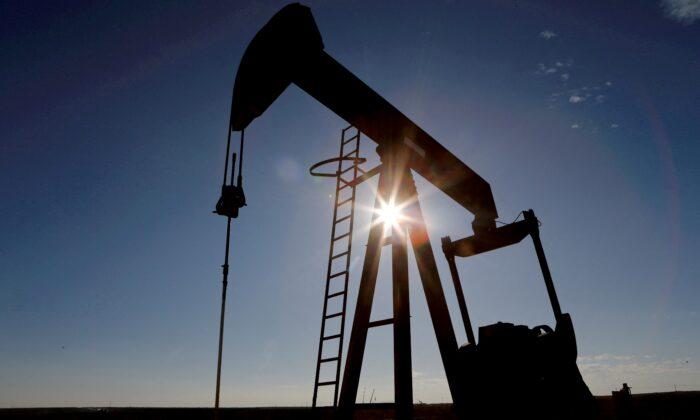Crude oil prices extended their rally to kick off the trading week, buoyed by news that OPEC will delay a production hike again.
December West Texas Intermediate futures surged by more than 2 percent to above $71 per barrel on Nov. 4 on the New York Mercantile Exchange.
Brent crude, the global oil price benchmark, rose by more than 2 percent to nearly $75 per barrel on London’s ICE Futures exchange.
Year-to-date, both contracts are down by about 0.25 percent.
Output reductions were initially scheduled to be phased out starting in October but were delayed to the end of November because of slumping prices and weak demand.
Investors have feared that OPEC could oversupply the global economy. Now that OPEC has postponed a production hike again, ING strategists say worldwide energy markets may have to reconsider the cartel’s strategy.
Oil has been volatile this year as traders navigate turbulence, ranging from geopolitical conflicts to supply-demand fundamentals.
After reaching a 2024 peak of $87 per barrel in April, oil prices have been trending downward.
Although there have been spikes driven by growing Middle East tensions that have fueled concerns of a broader regional conflict, the rallies have been short-lived, resulting in sharp selloffs after easing hostilities.
Energy markets were spared from Israel’s retaliation last month that focused on Iran’s military targets instead of Tehran’s energy infrastructure.
Speculators trimmed their net-long positions following the attack “as they took the view that Israel’s targeted response to Iran opened the door for de-escalation.”
Supply and Demand
The primary catalyst for crude’s second-half decline has been expectations of improving supply and shrinking demand.In recent weeks, energy experts have offered mixed projections on the oil market’s future in the year ahead and beyond.
OPEC bolstered its projections for international crude demand, fueled by developing world growth and a sluggish shift to new energy vehicles.
The report noted that Africa, India, and the Middle East would lead the growth.
A slower shift to clean-energy fuels and electric vehicles would further support demand.

OPEC concluded that there is no peak demand.
“Now, some people might say this is on the high side, but other independent analysts and researchers in the market have it at similar levels. Some have it at, we believe, very low levels. We’re still quite robust on demand,” Al Ghais said.
“I think there’s a bit too much doom and gloom and pessimism in terms of the demand outlook by some corners in the market, in terms of analysts and research, but we believe, still, our numbers are in line with many other independents.”
OPEC’s forecasts and Al Ghais’s remarks are at odds with various estimates.
The Energy Information Administration (EIA) reduced its estimates of domestic and international oil demand in 2025 amid slowing economic activity in China and North America.
Goldman Sachs Research analysts project that peak oil demand is a decade away and predict that, instead of declining, demand will likely plateau in the following years.
French oil major TotalEnergies has predicted that global crude demand will peak after 2030.
Governments and market participants must prioritize “affordable low-carbon technologies” and “deploy them across the globe” amid strengthening energy demand, according to Aurélien Hamelle, managing director of strategy and sustainability at TotalEnergies.
“To keep pace with the growth in energy demand which is essential to the legitimate improvement in the standard of living of the emerging countries’ population while simultaneously reducing greenhouse gas emissions, public policies and the players in the energy chain must give priority to mature and sufficiently affordable low-carbon technologies and cooperate to deploy them across the globe,” Hamelle said in the report.
“This is the way to combine economic and social development with the acceleration of the energy transition.”
In September, IEA analysts said they expect global crude consumption to increase by 950,000 bpd next year, down from the boost of 2.1 million bpd in 2023.
Outlook on Prices
Next year could be bearish for crude oil prices.Rob Thummel, managing director and senior portfolio manager at Tortoise Capital, said he thinks prices could hover at about $60.
“Lots of pessimistic views on oil demand likely keep oil prices in the $60s until a clear picture of demand emerges,” Thummel said in a note.
At the same time, he said, there is plenty of near-term uncertainty, such as the outcome of the U.S. election, geopolitical risks, and OPEC supplies.
EIA expects Brent will average $78 per barrel in 2025, a $7 downgrade from the September STEO, reflecting a decrease in global crude demand growth in 2025.
However, this forecast could change if the Middle East conflict escalates, “raising the possibility of oil supply disruptions and further crude oil price increases.”







